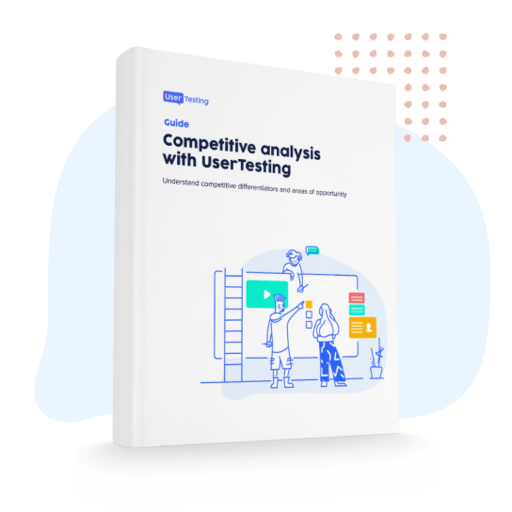
How to find your way to the customer experience promised land

Customer experience has become so important—even more important than products themselves—that more than 80% of consumers are willing to pay more for a great one, according to research by Capgemini. And yet the same report showed that while 75% of companies believe themselves to be customer-centric, only 30% of customers feel this is the case.
Quite a disconnect. So what’s stopping more companies from improving their customer experience?
In some cases, executives are reluctant to invest in customer experience (CX) because they find it hard to project the ROI of these initiatives—despite studies like one by Forrester last year that determined CX has a tangible effect on revenue, customer loyalty, and even stock performance.
Secondly, improving the CX a company provides necessitates a cultural shift. It requires a company-wide commitment and sense of ownership for customer experience by every employee. That’s a big leap when many businesses have no established process or budget for improvements.
How then can a company overhaul its approach to CX and reach the promised land of brand loyalty? You wouldn’t try to navigate an unfamiliar city without a map app, and the same should hold true for the CX journey. You need a blueprint.
What is your customer experience maturity level?
The first step, as obvious as it may seem, is to establish where you currently are. What is the organization’s CX maturity level? Maturity levels can be classified as aware, reactive, optimized, and visionary.
- Aware: In “aware” organizations, we often see: no strategy or established program for customer-driven decision-making; merely one individual or group advocating for the importance of listening to customers; some technology but it’s typically focused on post-release measurements; no governance or process; little measurement within siloed groups; and overall, a general recognition of CX-related issues, but teams are not empowered to address them.
- Reactive: Here, there is just an ad hoc program with some leadership support for customer-driven decision making; issues are addressed as they arise in live experiences; technology investments are focused on post-release measurement; very little governance or process; little to no measurement exists on the impact of changes or improvements; and overall, a process of addressing CX-related issues as they come up with no chance to “get ahead” of issues before they arise.
- Optimized: In an “optimized” environment, an organization or team-specific programs for customer-driven decision making are in place with executive support and sponsors; technology is in place to manage the customer experience pre- and post-release; issues are addressed as they arise as well as proactively (before they become issues) in live experiences and production; some measurement on impact of changes or improvements; and overall, a process that is focused on continually improving the customer experience.
- Visionary: In this highest level of maturity, a company-wide program has been established, driven from the C-level, and fully supported by all leadership; technology is in place to manage pre- and post-release customer experience issues; issues are addressed across the lifecycle of product and experience development; a sophisticated measurement practice is in place to capture the impact of changes or improvements; and overall, there is a culture of endless curiosity to drive disruption.
5 pillars of customer experience
To climb the ladder of maturity, it’s important to assess where you fall within each of the following pillars that impact your maturity level: strategy, culture, technology, governance, and measurement. Drilling down into the five pillars:
Strategy
The desired state of strategy is where insight collection and customer-centric decision making are integrated into process, everyone is empowered to understand customers, and customer understanding is aligned to business strategy.
To empower customer-centricity throughout the organization, companies can set up centers of excellence that oversee the program, collect strategic and foundational customer insights that drive strategic direction, create training and tools, and are embedded in key product and service initiatives.
Culture
A strong customer-driven culture is where executives have fully bought in on the importance of CX, the company has shared values and behaviors around delivering a great experience, especially around hiring, socialization and rewards, and, last but not least, endless curiosity about customers permeates everything the business does.
Articulating the need to encourage endless curiosity, Jeff Bezos said in his 2019 letter to shareholders, "Sometimes (often actually) in business, you do know where you're going, and when you do, you can be efficient. Put in place a plan and execute. In contrast, wandering in business is not efficient...but it's also not random. It's guided—by hunch, gut, intuition, curiosity, and powered by a deep conviction that the prize for customers is big enough that it's worth being a little messy and tangential to find our way there."
Technology
An optimal technology pillar means the company has a suite of quantitative and qualitative platforms to gather and analyze customer data and insights, teams have broad access to platforms that support customer-driven decision making, and a system for sharing and storing customer data and insights is in place.
Governance
An optimal governance program involves customer empathy responsibilities defined by role, training and empowerment programs to drive success, and appropriate workflows to retain integrity.
To make sure everyone up and down and across the organization is invested in CX, companies should establish “immersion hours” in which people at all levels dedicate time to specific tasks that involve interacting with, observing and understanding customers.
Measurement
And finally, a strong measurement program means a measurement framework is in place and adopted, it is focused on key business metrics (cost avoidance, revenue, etc.), and the impact of changes based on insights from customers are measured.
When assessing your CX maturity, you are likely stronger in some pillars as compared to others. When in this position, you have a couple choices. You can optimize and really double-down on where you are strong or you can focus on building the pillars that are weak.
Make improving your customer experience a daily habit
In today’s digital world, saying you offer a great customer experience isn’t nearly enough. You have to prove it every day, with a carefully devised, ongoing plan that helps everyone in the organization recognize the ROI of customer experience. And in order to get to this promised land, you must invest in the five pillars of CX maturity to move your practice—and the success of your organization—ahead.
This post was originally published by our friends at CMS Wire and is shared with their permission.
Featured guide
Competitive analysis with UserTesting
Learn how to understand your competitive differentiators and identify areas of opportunity.






